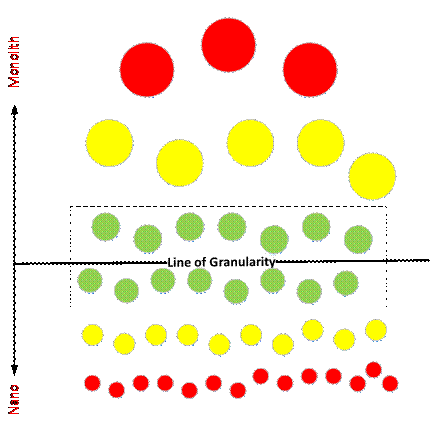Microservices Architecture – APPENDIX A: Service Granularity
The various levels of service granularity and the positioning of microservices can be illustrated using the following diagram:

Assume there is an imaginary horizontal line (x-axis), representing the line of granularity; the right level determined for MSA. The services that fall closer, or around this line (green services within the dotted box), are good microservices; those that are way above this line trend towards exhibiting characteristics of monoliths, and those that fall way below the line trend towards exhibiting characteristics of nano-services. Many of the yellow services and all of the red services fall in either of these camps.
Problems with monoliths include:
- Even small, minor changes require rebuilding of the entire code base and re-deployment of the new build.
- Change cycles (for various functions and features) will have to be tied together, causing an undesirable dependency.
- Achieving modular structure within a monolith is hard to enforce.
- Scaling is achieved by replicating the entire application (though specific functions may have different scalability requirements).
Problems with nano-services include:
- Remote calls are expensive (from a performance perspective).
- Communication between services becomes chatty, resulting in a sub-optimal system.
- Unmanageable explosion of services can result in service proliferation, challenging governance.
⇒ Glossary